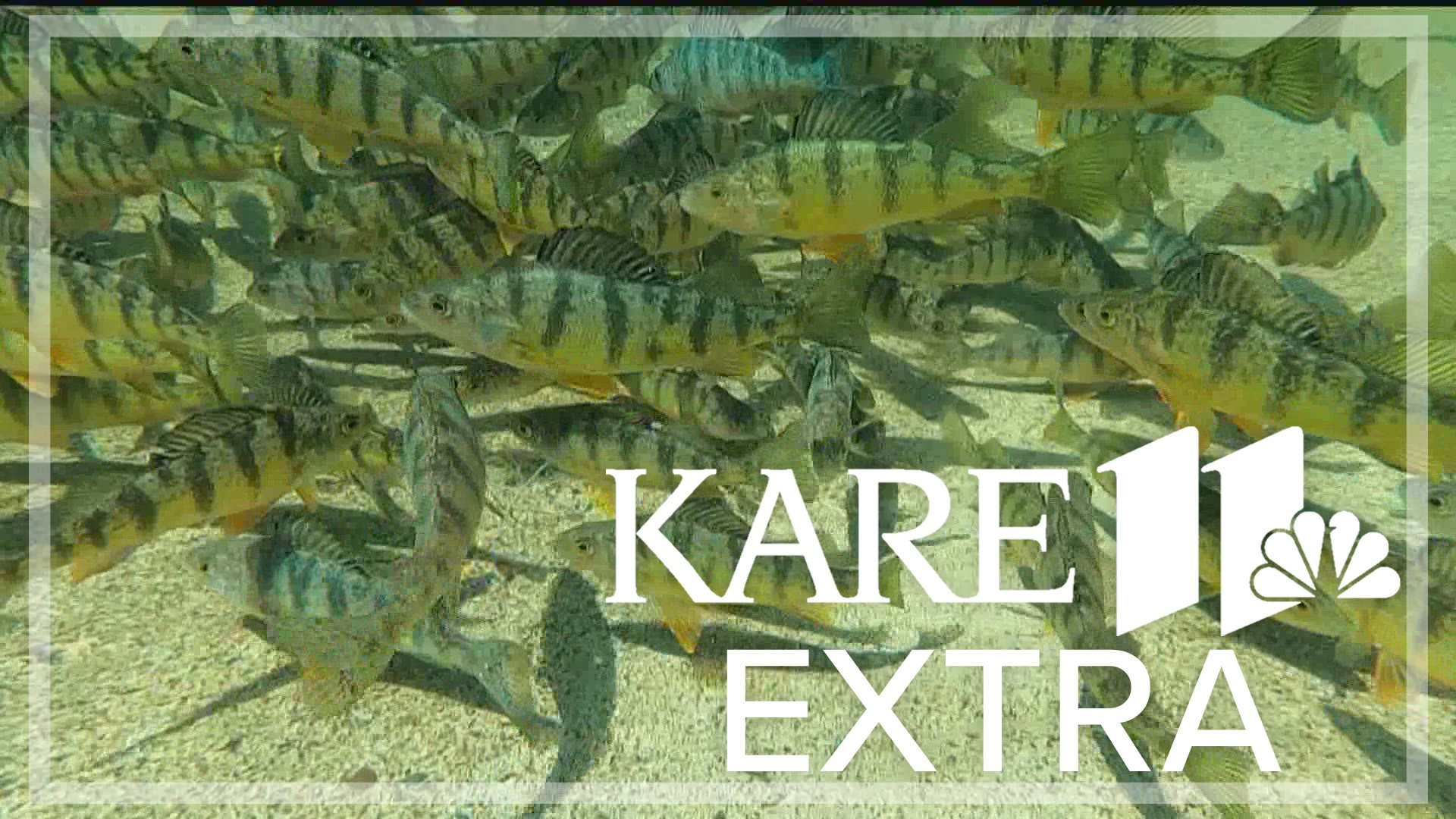BRAINERD, Minn. — The Land of 10,000 Lakes overflows with fish stories about the big one that got away, but Minnesota Department of Natural Resources researchers have reeled in a true whopper – the story of the shrinking fish, the yellow perch.
“Our conclusion is that perch, bigger than five inches, are decreasing in numbers and that those perch aren’t reaching a maximum size as big as they used to,” says Beth Holbrook, research scientist, Minnesota DNR.
In the next year, Holbrook expects to wrap up a study, “Assessing Yellow Perch Populations with Experimental Sampling Gears,” which began in 2019, that when combined with survey data back to the 1970s reveals perch are getting smaller and, in fact, maturing earlier.
“I say for sure a mystery. I think it could potentially be a problem, particularly in our lakes that we really love to fish for perch,” Holbrook says.
Holbrook notes the mystery has not gone unnoticed, pointing to observations even by the public. Each summer, for instance, Minnesotans flock to the DNR’s fish pond at the State Fair where dozens of fish species are on display, including perch.
One St. Paul angler, Brent Muller, who was enjoying the fish pond with family last fair, noted, “They’re really good to eat. You just have to find perch that are big enough to filet and get decent size filets.”
Holbrook says the Brainerd Area Fisheries Office of the DNR first tried to solve the mystery, designing and casting smaller mesh nets on Gull Lake. That was successful; smaller perch that could escape the traditional nets were captured.
Holbrook and the DNR decided to use those new nets statewide for their perch study. Beyond the nets, the DNR used electrofishing to gather perch and then collected data, including length, weight, sex and age.
“We’ve also found that the size of maturity is also correlated to maximum size, so if fish mature earlier, they’re not getting as big,” Holbrook says.
For Holbrook the why is the mystery; she has some hypotheses.
Holbrook suspects climate-warmed water, a change in perch predators, and zebra mussels, which remove nutrients and murky, protective cover have contributed to the early-maturing, smaller perch.
What irony: Clearer water... could be a problem.
“Predators can see you better so it’s not just food availability, it’s also how vulnerable are you to being seen and eaten."
Holbrook expects any study that follows the DNR’s current effort to explore more of the why. Ultimately, the DNR is trying to better manage perch fisheries.
“People love to fish for perch, and we want to make sure that they can continue to do so,” Holbrook says.
Watch more KARE in the Air:
Check out amazing drone video of Minnesota's most beautiful and iconic spots in our YouTube playlist:

